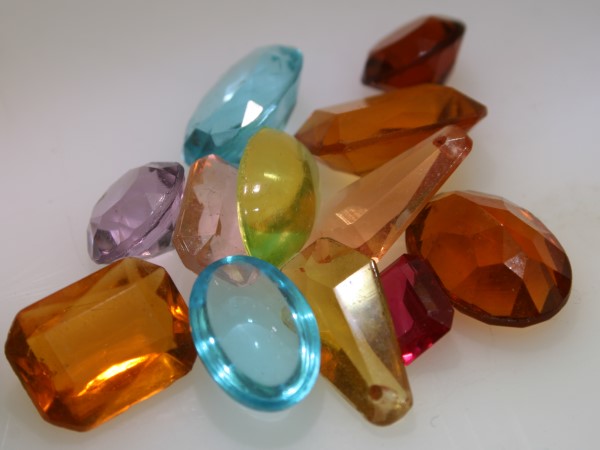The term "Crystal" is used for both: natural grown crystals as well as artificial glass. The use of the term "crystal" for not crystalised products is kind of missleading and prohibited in European countries.
Companys like Swarovski make use of this misleading linguistic extensively. For marketing reasons, Swarovski avoids the word "glass" whenever possible and rather speaks of »Swarovski Crystal«. However, especially when dealing with jewelry this creates a considerable risk of mistaking them for natural products. That is why the practice of Swarovski and other artificial glass produducers is to be refrained from.
The risk for mistaking artificial glass for a natural product multiplies significantly in the case of Andara Crystal by selling raw and tumbled stones "from natural deposits". The producers provide pictures of raw stones of several foot in diameter on the Internet with the intent of suggesting natural occurency.
Referred to as "Synthetic Obsidian", "Obsidian Glass", "Blue Obsidian", "Red Obsidian" or "Andara Crystal" several artificial glass products have been examined radiographically (EDX-RF) in the EPI laboratory. The results of these investigations showed significant differences in the elemental composition between all artifcial glasses and natural glasses.
|
SiO2 |
Al2O3 |
CaO |
K2O |
Na2O |
Fe2O3 |
MgO |
|
|
Andara Crystal (Gew.%) |
68,80% |
3,29% |
5,08% |
0,05% |
22,24% |
0,04% |
0,02% |
|
Obsidian (Gew.%) |
70% |
10% |
2% |
2% |
6% |
1% |
1% |
|
Moldavit (Gew.%) |
79-83% |
8-10% |
1-3% |
2-4% |
1% |
1-2 % |
1-2 % |
Comparison of the chemical composition of "Andara-Crystal" and natural obsidian or moldavite (tektite). The high calcium and sodium content is typical for an artificial soda-lime glass (bottle glass).
The chemical composition of the examined Andara Glass corresponds to artificial Soda-Lime Glasses. Compared to natural glass, this prevalent type of glass has very low contents of aluminum (Al2O3), potassium (K2O) and iron (Fe2O3) and significantly higher contents of calcium (CaO) and sodium (Na2O).
Even though »Andara Crystal« are produced artificially, they are being hyped for esoteric and energetic reasons on the Internet. With the lucrative profit margins in mind, it is not surprising that there are struggles about who has the only real »Andara Crystal«, where it comes from and how it differs from supposedly fake material. The main argument is that this glass, which - not surprisingly - "is different from Obsidian", is found in a supposedly natural environment. Such natural finding situations have misled many discoverers of waste glass disposal sites all around the world. For some time, these materials were even cut and ground and offered on mineral fairs as »Antique Glass«. Therefore, we want to emphasize that natural places like beaches, mining tunnels or forests are no proof for a natural origin of the discovered material.




